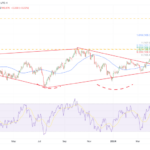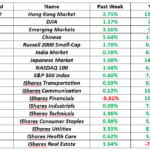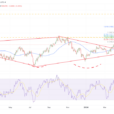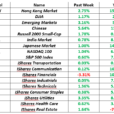
The benefits of a simple portfolio.
Barry Ritholtz had a great post on Friday titled Why You Should Stick With Buy And Hold. If you buy and hold on no matter what, save for rebalancing and changing your asset allocation based on life events, and you have an adequate savings rate then you have a very good chance of having what you need for retirement or at least getting very close to what you need. The average annual return from the stock market varies depending on the time studied but the 8-10% that most studies cite should be sufficient but in addition to an adequate savings rate, you need to avoid any truly self-destructive behavior like selling after a large decline and watching the rally from the sidelines. Two of those three (savings rate and not succumbing to emotion) are within your control which is very encouraging and obviously market performance is not in your control.
Barry offers the following quote from an email sent to him;
“I followed you out of equities in 2008, but I thought you were crazy in March 2009 for going back in. It’s been three (or four or five) years, and I am still all cash and paralyzed. Help!”
Anyone who has been reading this blog for any length of time might remember what a huge bet I think getting all out is and for two reasons, once cited in the quote which is when/how do you get back in and getting completely out at some given time may simply be wrong. I don’t think too many people would be happy going 100% cash in front of what turned out to be 6% decline not to mention capital gains consequences for certain accounts.
If you want to take some defensive action in the face of an increased likelihood of a large decline it is crucial to realize you cannot trade the event perfectly. I, of course, believe in this but spend no time trying to be exactly right. My goal as always is to avoid the full brunt of any large declines.
Including a fund like the Pacer Trend Pilot Large-Cap ETF (PTLC) in your portfolio is an easy way to avoid the full brunt. It goes to 50% cash when the S&P 500 Total Return closes below its 200 DMA for five days and then goes 100% cash when the slope of the 200 DMA has been negative for five days, both happened at the same time on this go around.
















